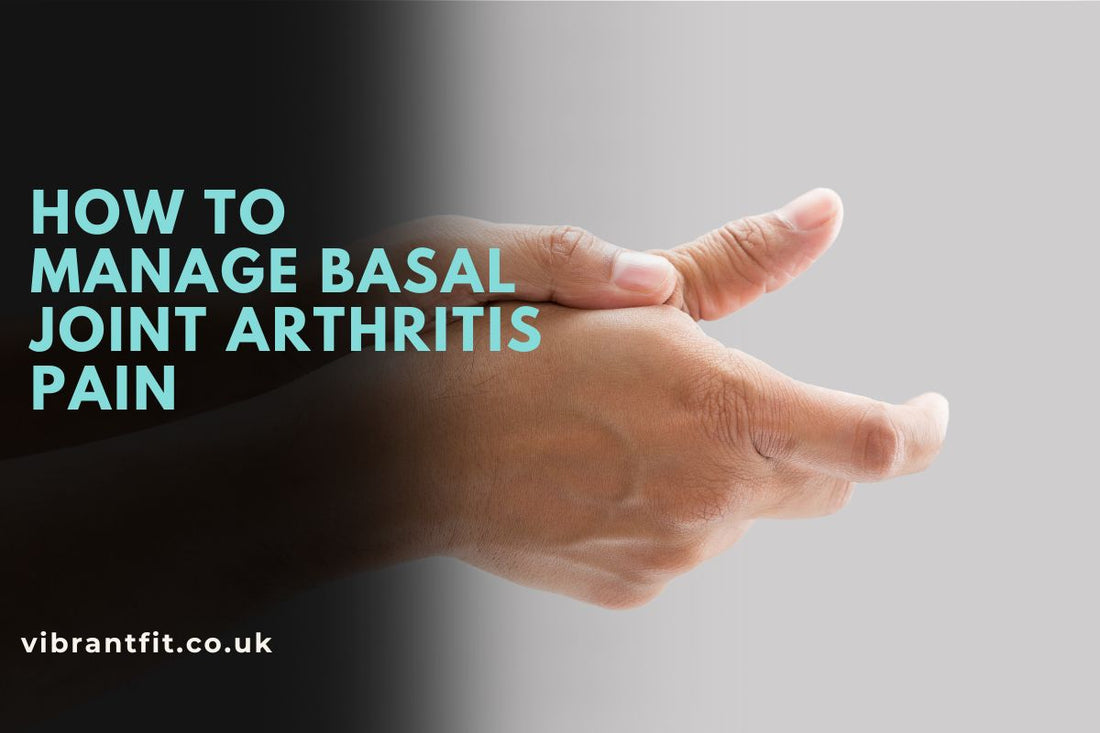
What is Basal Joint Arthritis?
Share
If you’re experiencing pain or stiffness at the base of your thumb, basal joint arthritis might be the cause. This condition affects the small joint that gives your thumb its wide range of motion, making simple tasks like turning a key or holding a cup painful and frustrating. While basal joint arthritis is common, especially as we age, there are ways to ease discomfort and protect your thumb from further damage. Let’s take a closer look at what basal joint arthritis is and how you can manage it to keep your hands strong and flexible.
What is Basal Joint Arthritis?

Basal joint arthritis, sometimes called basal thumb arthritis, is a common condition affecting the joint at the base of your thumb. This joint connects the thumb to the wrist and is essential for precise hand movements. Whether gripping a cup, buttoning a shirt, or holding a pen, this joint’s smooth function is crucial. When arthritis develops here, it causes pain and restricts movement, making daily tasks more difficult. This type of arthritis is a form of osteoarthritis caused by the wearing away of cartilage cushioning the bones.
Causes of Basal Joint Arthritis
Basal joint arthritis usually develops from natural wear and tear over time. The cartilage that cushions the bones thins and breaks down. As the cartilage disappears, bones rub directly against each other, causing pain and inflammation. Injuries or trauma to the thumb can also accelerate this damage. Genetics may play a role, with some people more prone to arthritis than others. It typically appears between ages 40 and 50 and is more common in women.
-
Cartilage deterioration due to ageing
-
Bone-on-bone friction as cartilage wears away
-
Thumb injuries or trauma
-
Genetic or anatomical predisposition
-
Usually develops between ages 40-50
-
More frequent in women.
Symptoms of Basal Joint Arthritis

Early signs often include pain and stiffness at the base of the thumb. You may feel tenderness when pinching, gripping, or twisting motions like turning a key. Pain often worsens with activity and may linger afterward. Over time, swelling or a bony lump can appear near the joint. The thumb might look enlarged or misaligned as the joint shifts. You may notice reduced strength and difficulty performing tasks such as opening jars or buttoning clothes. Interestingly, pain levels can vary and may not always match the amount of joint damage seen on X-rays.
-
Pain, tenderness, and stiffness at thumb base
-
Pain worsens with gripping, pinching, twisting
-
Swelling or bony bump near joint
-
Joint misalignment or deformity
-
Loss of thumb strength and range of motion
-
Difficulty with daily tasks
-
Variable pain and inflammation.
Treatment Options for Basal Joint Arthritis
Non-Surgical Treatments
Many cases are managed without surgery. Avoiding repetitive thumb pinching and twisting reduces strain. Wearing a splint or brace supports the joint and limits painful movement. Over-the-counter painkillers and anti-inflammatory medicines ease discomfort. Corticosteroid injections can reduce inflammation and provide longer pain relief. Physical or occupational therapy teaches exercises to improve strength and mobility. Heat or cold packs may relieve pain. Assistive devices can help with daily activities. Hyaluronic acid injections have shown promise but are not officially approved for this use.
Also read : What is CTS
Surgical Treatments
Surgery is considered if pain is severe or joint damage advanced and other treatments fail. Joint fusion relieves pain but reduces thumb movement. Trapeziectomy removes the bone at the joint base and uses a tendon to stabilize and cushion the joint. This surgery often reduces pain and improves function but requires recovery time. Joint replacements are rare due to limited success. Surgery choice depends on individual pain, activity level, and goals.
-
Avoid repetitive pinching and twisting
-
Use splints or braces to support thumb
-
Painkillers and anti-inflammatory medications
-
Corticosteroid injections
-
Physical and occupational therapy
-
Heat and cold therapy
-
Assistive devices for daily tasks
-
Surgery if conservative treatments fail
-
Joint fusion or trapeziectomy with tendon reconstruction
-
Joint replacement rarely used.
Recommended Thumb Splints for Basal Joint Arthritis

If basal joint arthritis is making your thumb ache, a good splint can really help. The ErgoThumb Spica Splint is great because it supports your thumb in a comfy, natural position without feeling bulky. Then there’s the Support Thumb Spica Splint, which offers firmer control if you need to keep your thumb steady and avoid movements that cause pain. For those who want something adjustable but solid, the Solid Thumb Support Splint does the trick by giving reliable support while still letting you move a bit. Using any of these can ease your discomfort and give your thumb the rest it needs.
Conclusion
Basal joint arthritis can make everyday hand movements painful and challenging, but understanding the condition is the first step toward managing it effectively. With early diagnosis and the right treatment—ranging from simple lifestyle changes and splints to, if necessary, surgery—you can reduce pain and maintain your thumb’s function. Don’t ignore the symptoms; seeking help early can make a big difference in keeping your hands strong and capable for the long run.
